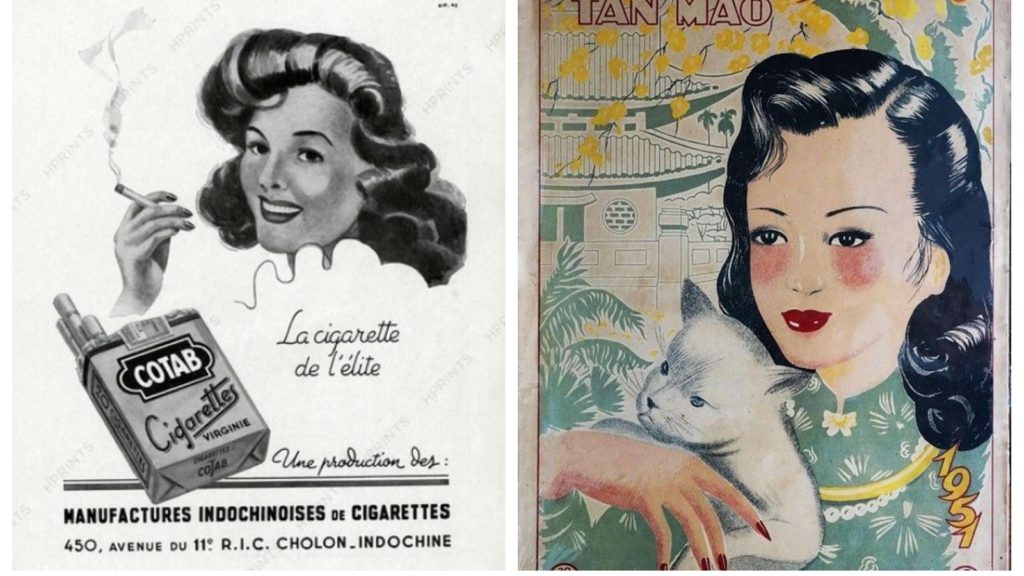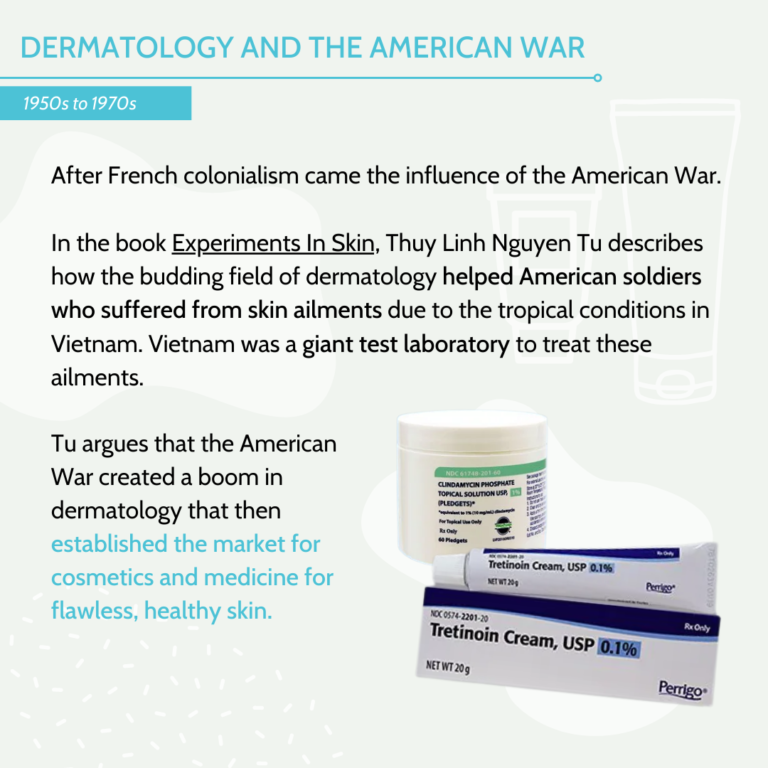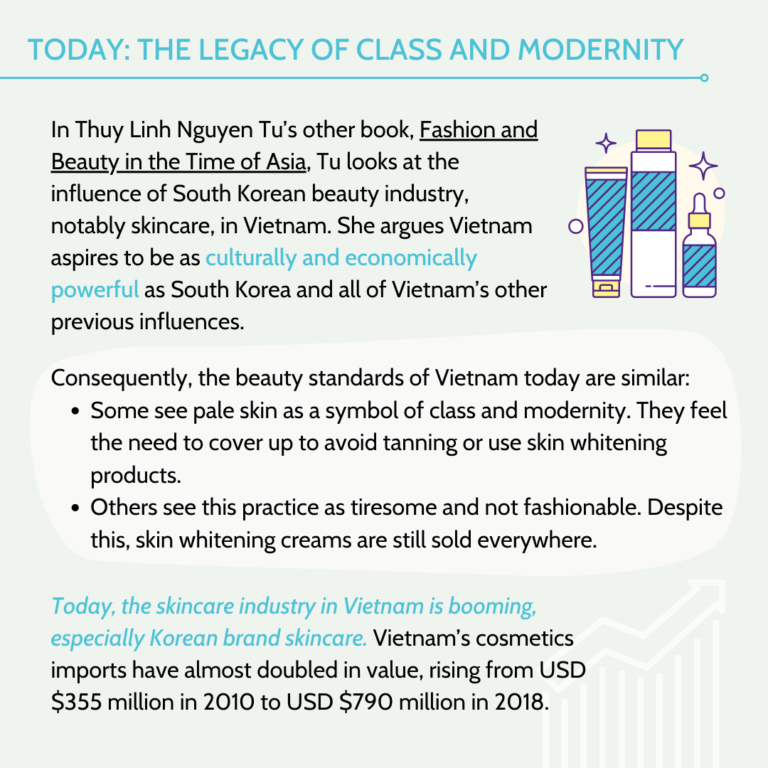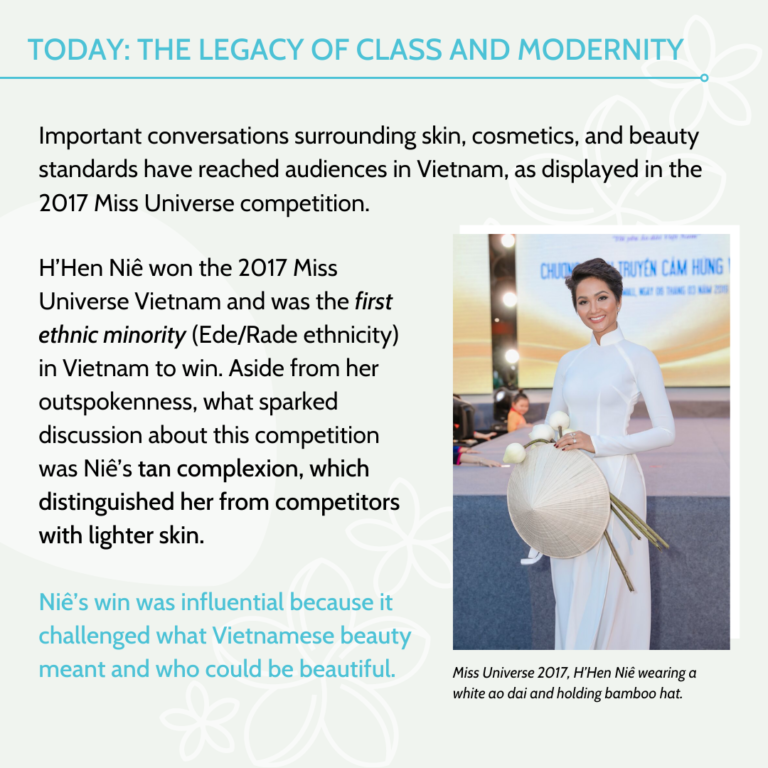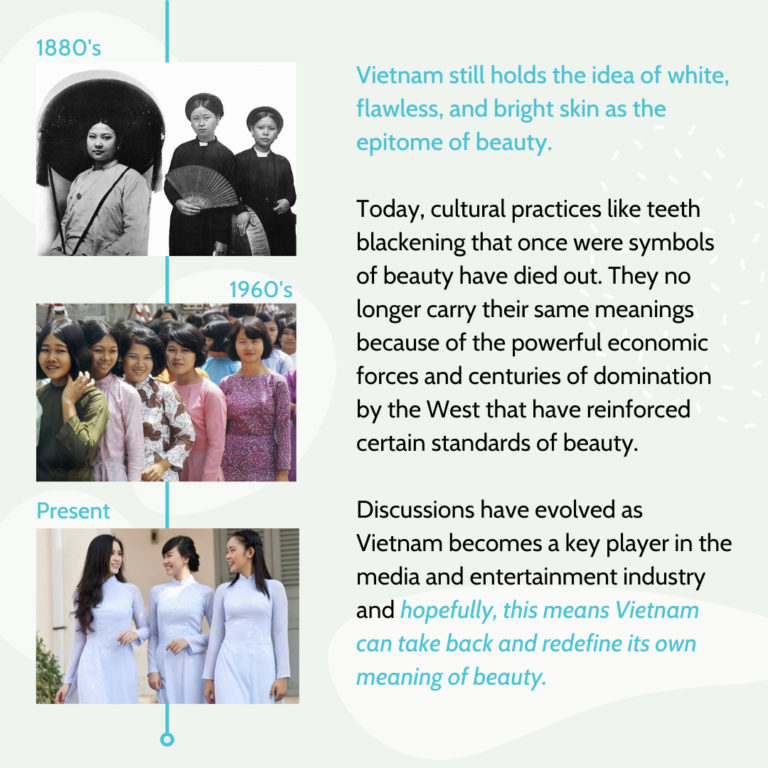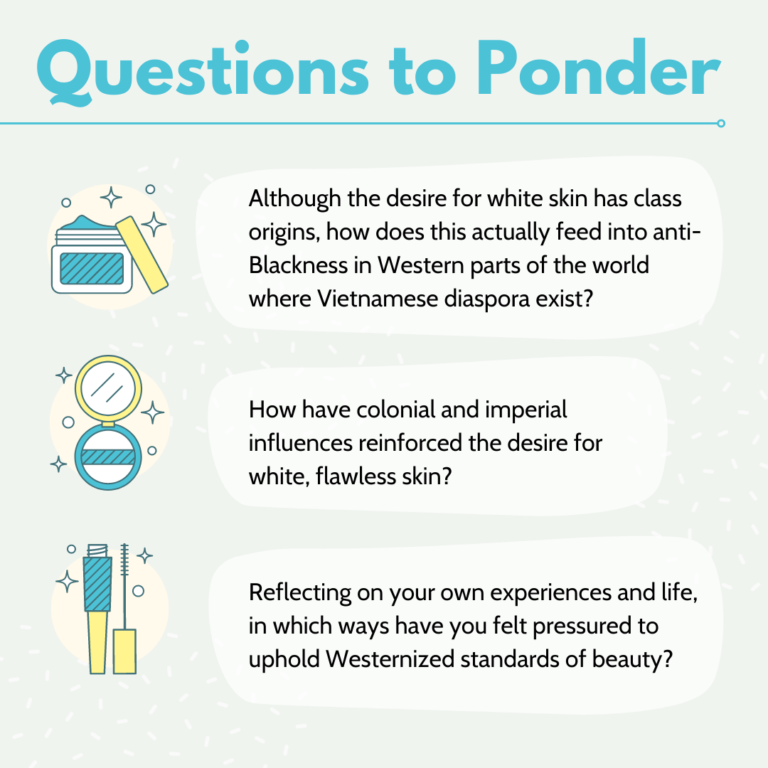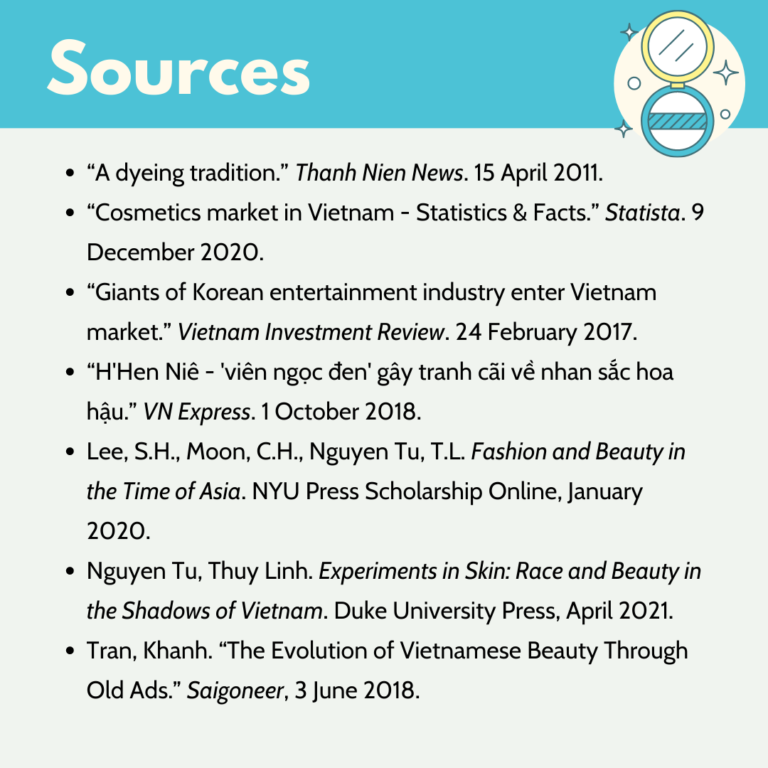Pre-colonial times
(Pre-19th century)
“Cái nết đánh chết cái đẹp”
“The virtue defeats the beauty”
Vietnamese proverbs and poems often depict women as virtuous and fair-skinned.
Like in many different cultures, white skin was a class signifier for women in Vietnam. It meant that one spent their days indoors not doing physical labor like farming.
This belief was spread throughout China during the Han Dynasty, but also spread to Vietnam during the thousand years of conquest.
Teeth blackening and the colonial times
(19th century to 1950s)
During French colonialism in Vietnam, French adverts sold skin creams that claimed to whiten and give women blemish-free skin. Red lipstick and red cheeks trends were of French influence.
The French also disapproved of teeth blackening, a Vietnamese Kinh and ethnic minority practice that symbolized beauty and a rite of passage for girls. Lasting up to a week, this involved dyeing a girl’s teeth with shellac dye, though individual rituals and techniques varied.
For the Vietnamese ethnic groups that practice, women with blackened teeth were considered “proper” women. White teeth were believed to resemble the teeth of demons, so blackened teeth were believed to ward demons off.
This practice has become obsolete. Ingredients are now hard to come across and beauty standards have modernized.
Dermatology and the American war
(1950s to 1970s)
After French colonialism came the influence of the American War.
In the book Experiments In Skin, Thuy Linh Nguyen Tu describes how the budding field of dermatology helped American soldiers who suffered from skin ailments due to the tropical conditions in Vietnam. Vietnam was a giant test laboratory to treat these ailments.
Tu argues that the American War created a boom in dermatology that then established the market for cosmetics and medicine for flawless, healthy skin.
Today: the legacy of class and modernity
In Thuy Linh Nguyen Tu’s other book, Fashion and Beauty in the Time of Asia, Tu looks at the influence of South Korean beauty industry, notably skincare, in Vietnam. She argues Vietnam aspires to be as culturally and economically powerful as South Korea and all of Vietnam’s other previous influences.
Consequently, the beauty standards of Vietnam today are similar: Some see pale skin as a symbol of class and modernity. They feel the need to cover up to avoid tanning or use skin whitening products. Others see this practice as tiresome and not fashionable. Despite this, skin whitening creams are still sold everywhere.
Today, the skincare industry in Vietnam is booming, especially Korean brand skincare. Vietnam’s cosmetics imports have almost doubled in value, rising from USD $355 million in 2010 to USD $790 million in 2018.
Important conversations surrounding skin, cosmetics, and beauty standards have reached audiences in Vietnam, as displayed in the 2017 Miss Universe competition.
H’Hen Niê won the 2017 Miss Universe Vietnam and was the first ethnic minority (Ede/Rade ethnicity) in Vietnam to win. Aside from her outspokenness, what sparked discussion about this competition was Niê’s tan complexion, which distinguished her from competitors with lighter skin.
Niê’s win was influential because it challenged what Vietnamese beauty meant and who could be beautiful.
The legacy and its consequences
Vietnam still holds the idea of white, flawless, and bright skin as the epitome of beauty.
Today, cultural practices like teeth blackening that once were symbols of beauty have died out. They no longer carry their same meanings because of the powerful economic forces and centuries of domination by the West that have reinforced certain standards of beauty.
Discussions have evolved as Vietnam becomes a key player in the media and entertainment industry and hopefully, this means Vietnam can take back and redefine its own meaning of beauty.
Questions to ponder
Although the desire for white skin has class origins, how does this actually feed into anti-Blackness in Western parts of the world where Vietnamese diaspora exist?
How have colonial and imperial influences reinforced the desire for white, flawless skin?
Reflecting on your own experiences and life, in which ways have you felt pressured to uphold Westernized standards of beauty?
Sources
A dyeing tradition -Thanh Nien News
Cosmetics market in Vietnam – statistics & facts by Minh-Ngoc Nguyen
Giants of Korean entertainment industry enter Vietnam market – Vietnam Investment Review
H’Hen Niê – ‘viên ngọc đen’ gây tranh cãi về nhan sắc hoa hậu – VNExpress
Fashion and Beauty in the Time of Asia by S. Heijin Lee, Christina H. Moon, and Thuy Linh Nguyen Tu
Experiments in Skin: Race and Beauty in the Shadows of Vietnam by Thuy Linh Nguyen Tu
The Evolution of Vietnamese Beauty Through Old Ads by Khanh Tran
